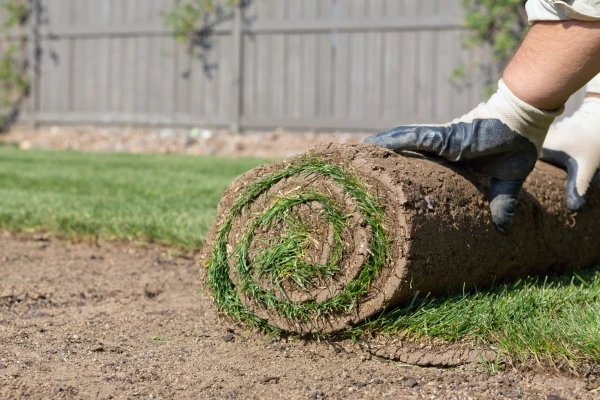
The Grounds Guys explain why laying sod over an existing lawn can lead to several issues.
|
You may be wondering how to lay sod over an existing lawn, and it's easy to see the appeal. After all, why go through the hassle of tearing up your old lawn when you can just lay down a new one? However, there are some serious problems with this approach.
Here, we will review what those problems are and provide useful tips for laying sod the right way.
Table of Contents:
Roots Don’t Make Contact
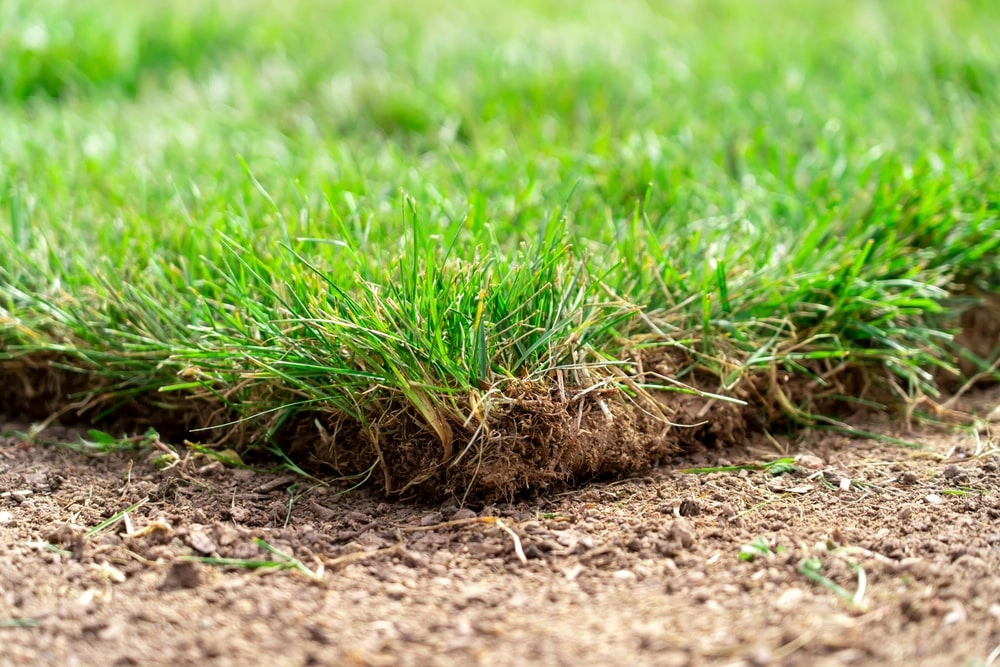
While it may not be the answer you’d like to hear, if you want good results, the answer to “Can I lay sod over existing grass” is always no. One of the most important reasons why you should not lay sod over an existing lawn is that when you lay sod over existing grass, the roots of the sod won't make contact with the soil beneath. This means that the sod will have a harder time taking root and may eventually start to die. To avoid this problem, you need to make sure that the roots of the sod are in contact with the soil. This can be done by removing the old lawn before you lay down the sod. This will help ensure your new sod gets off to a successful start.
Sod Likely to Die
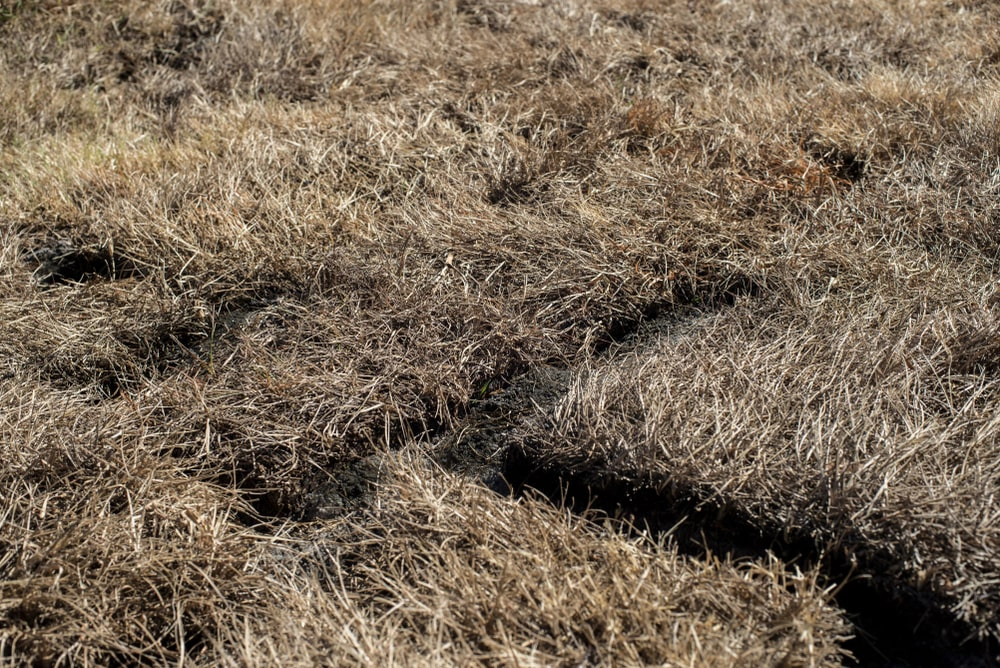
Another problem with laying sod over an existing grass is that it greatly increases the chances that the sod will die. If the sod can’t reach the soil, it also can’t get enough water to survive. This is especially a problem if you have a thick layer of thatch on your old lawn. The thatch will prevent the new sod from getting the nutrients it needs to survive. To avoid this problem, you need to make sure that the sod is making direct contact with the soil below.
Drainage Problems
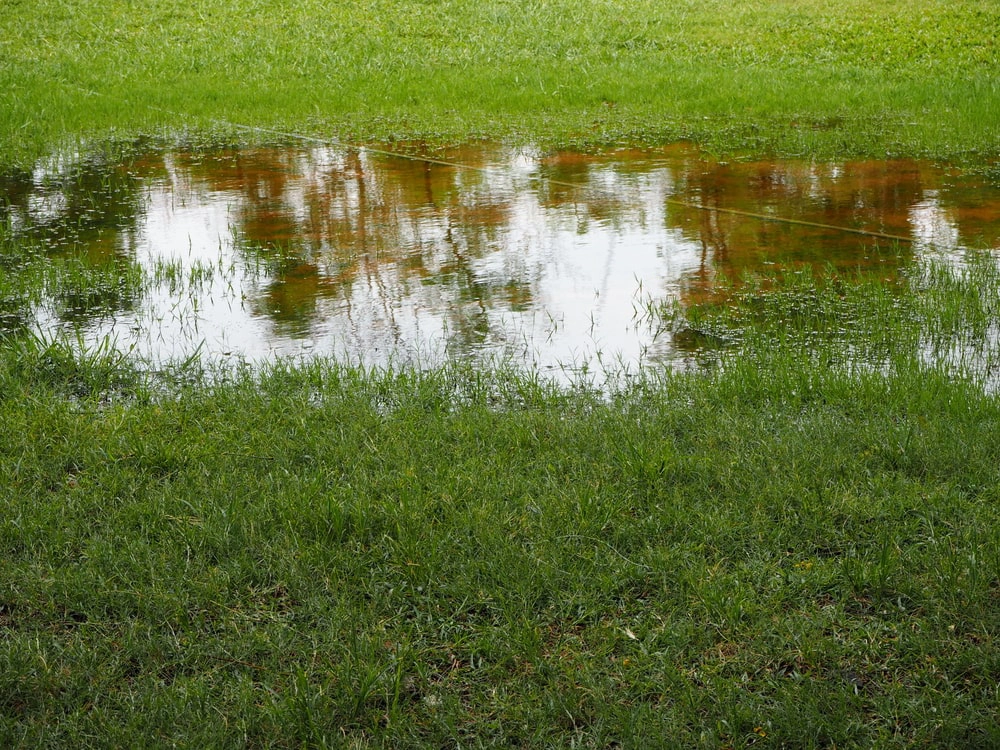
Unlike an established lawn, new sod has different drainage needs. If you lay sod down without preparing the soil first, the new sod will be competing with the existing turf for water. This can lead to drainage problems and may eventually kill the new sod. To avoid this problem, you need to make sure that the soil is well-prepared before you lay down the new sod. This means removing any obstacles to drainage, such as rocks or roots.
Uneven Appearance

The last major problem related to laying sod over an existing lawn is that it can result in an uneven appearance. This is because when the new sod is laid on top of the old grass, the result is visible differences in height. If your new sod survives, you are likely to end up with a bumpy surface that will be difficult to walk on, much less to mow. To avoid unsightly high or low spots, prepare the soil by removing your existing grass and then lay the sod as level with the ground as you can. The result will be a green, even lawn, which is pleasing to the eye and safer for regular use.
Best Time to Lay Sod
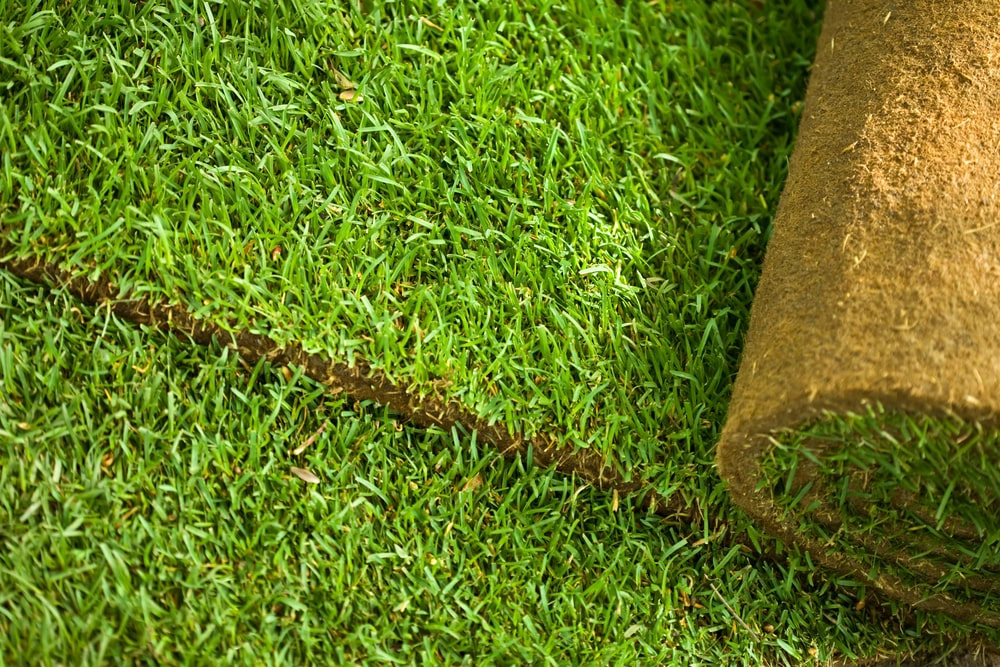
When it comes to laying sod, the good news is you do have some flexibility. As long as the weather is warm, you can start laying sod (ideally spring, summer, and in some locations fall). The key to ensuring your sod takes root and grows into a healthy lawn is making sure the sod you use has been recently cut (within the past 24 hours). Although you have some flexibility when it comes to time of year, you don’t want to waste time laying your freshly cut sod. Once your sod is in, make sure you water it within 30 minutes. Water your sod enough to ensure the soil beneath is sufficiently wet. This will give it a good start by helping the roots take hold and grow.
Professional Sod Installation with The Grounds Guys
With so much that could go wrong, it’s easy to see why laying sod over existing grass just isn’t a good idea. Instead, it’s best to remove your existing lawn and give your new sod the best possible chance to grow green and healthy. Of course, removing your existing grass and laying new sod can seem like a challenging task, which is why you might want professional sod installation from The Grounds Guys!
The Grounds Guys® can help remove your existing lawn and lay new sod so that you can have a beautiful new lawn this spring. To learn more about laying sod, request a free estimate online today!
Related Articles:
- Why You Should Schedule a Spring Tune-up for Your Lawn
- The Pros and Cons of Sod
- Seed vs. Sod: Which One to Choose?
- How to Remove Sod
FAQs About Laying Sod Over Existing Lawn
Our 200 franchise locations across the U.S. and Canada share a common goal - use our years of experience and expertise to help you bring the vision for their property to life. This includes answering questions you have about landscaping and lawn care. Below are answers to some of the most frequently asked questions about laying sod over an existing lawn.
Why don't the roots of new sod make contact with the soil underneath when laid over an existing lawn?
When you lay sod directly over existing grass, the dense layer of old turf creates a physical barrier between the new sod roots and the soil below. The existing grass acts like a thick mat that prevents proper root penetration. St. Augustine grass and other established turf types develop extensive root systems and thatch layers that block new sod from reaching the nutrient-rich soil underneath.
Without direct soil contact, the new sod cannot establish the deep root system necessary for long-term health. Removing the existing lawn before installing sod ensures your new grass can develop strong roots and access essential nutrients in the soil.
Barriers to laying sod over an existing lawn include:
- Thatch buildup from decomposing grass clippings and organic matter
- Dense root networks from the existing lawn that occupy soil space
- Compressed grass blades that create an impermeable surface
Does laying sod over old grass cause drainage issues?
Laying sod over existing grass creates multiple drainage problems that can quickly kill your new lawn. The old grass layer acts like a sponge, absorbing and holding water above the soil line, which prevents proper water infiltration to the root zone below.
Drainage complications may include:
- Water competition: The existing grass roots continue to absorb moisture, competing directly with your new sod for available water. This competition becomes especially problematic during dry periods when both layers are fighting for limited moisture.
- Pooling problems: Water tends to collect between the old and new grass layers rather than draining through to the soil. This creates waterlogged conditions that can lead to root rot in your new sod.
- Poor soil penetration: When water finally does reach the soil level, it may not penetrate effectively because the existing root system has already altered the soil structure and drainage patterns.
These drainage issues are particularly problematic for St. Augustine grass, which requires consistent, well-draining soil conditions. Proper soil preparation, including removal of existing sod or turf, ensures water moves efficiently through the root zone and prevents the standing water conditions that kill new sod installations.
If you notice any drainage issues after laying new sod, contact a professional to help you prevent any groundwater problems from escalating.
What causes an uneven appearance when sod is laid on top of an existing lawn?
Uneven sod is often due to the varying thickness and density of the underlying grass, which creates an irregular foundation for your new sod. Existing lawns naturally develop high and low spots over time, and laying sod over these areas magnifies these imperfections rather than correcting them.
This uneven surface makes mowing extremely difficult and creates safety hazards for walking. Whether you're installing super sod or standard varieties, proper ground preparation ensures a smooth, level surface that looks professional and functions properly for years to come.
Additional factors that can make sod appear uneven include:
- Thatch variations: Different areas of an existing lawn will have varying amounts of thatch buildup. Where thatch is thicker, new sod sits higher, creating visible humps and ridges across the lawn’s surface.
- Root density differences: Mature grass areas with dense root systems create firmer, higher surfaces, while thin or bare spots result in lower areas where the sod settles closer to the soil.
- Natural lawn contours: The existing lawn likely already has slopes, depressions, and raised areas that become more pronounced when covered with an additional layer of sod.
- Settlement issues: Over time, the old grass beneath begins to decompose unevenly, causing the new sod to settle at different rates and creating additional bumps and valleys.
This article is intended for general informational purposes only and may not be applicable to every situation. You are responsible for determining the proper course of action for your home and property. The Grounds Guys are not responsible for any damages that occur as a result of this blog content or your actions. For the most accurate guidance, contact The Grounds Guys location nearest you for a comprehensive, on-site assessment.